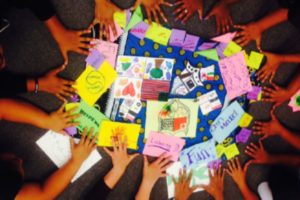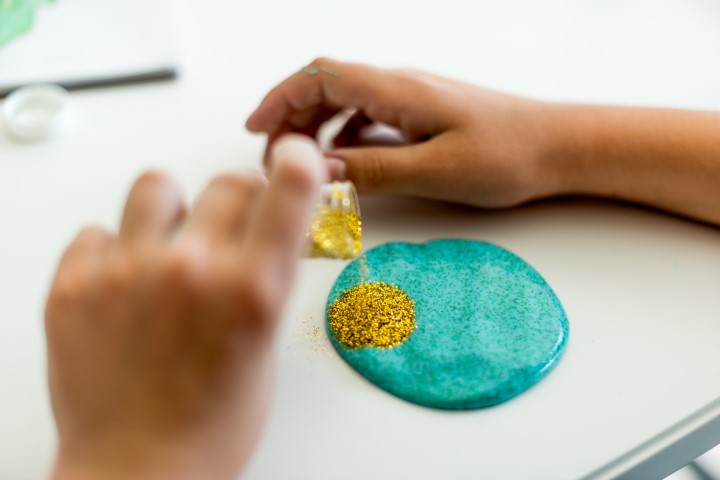Students in Kalamazoo, Michigan are fighting bullying, one batch of slime at a time.


Students in Kalamazoo, Michigan are fighting bullying, one batch of slime at a time.
About a dozen students from Kalamazoo area schools recently met at the Community Center of New Village Park to mix up their favorite concoction, a monthly reward for good behavior and regular attendance at weekly Justice Against Bullying in Schools (JABS) meetings.
The JABS Slime Club is one of four themed JABS clubs in the area that now draw about 60 students to discussions about how to handle and defuse bullying. The effort – which has expanded to include clubs focused on gardening, dancing and sewing, as well – bloomed from a single club of eight students in 2016 launched by Gwendolyn Hooker, whose granddaughter Justyce was forced to switch schools because of relentless torment.
The regular meetings give students a venue to discuss run-ins with bullies, a game plan for how to react, and an opportunity to bond with their classmates over a shared interest, Second Wave reports.
JABS’ anti-bullying message takes the form of the acronym D.T.T.E.
According to Second Wave:
D: Defend yourself, which might mean covering up or running. T: Tell an adult in charge, such as a teacher or administrator. T: Tell another teacher or administrator, or a parent, grandparent or trusted friend. And E: Express yourself to let your feelings out. D.T.T.E.
“Nobody should violate you personally,” Hooker tells students. “No one should touch you without your permission and make you feel bad. If they do, it’s up to adults to intervene.”
Much of the group’s work centers on restorative justice practices, which aims to bring bullies and their victims together to repair damage caused and to increase the likelihood that offenders will not reoffend. Many kids who bully others, Hooker explains, are often suffering through their own problems at home. Students at the October slime making session concocted blue glittery goo, in honor of National Bullying Prevention Month.
Hooker told the education site she founded JABS because she couldn’t find anti-bullying groups to connect with when her granddaughter was under attack, but the club has since halted the girl’s harassment and brought together numerous community groups to rally around the cause.
“Hooker says that in its two short years, JABS has accrued partnerships from across the city, including KYDNET, the Anti-Bully Squad Partners of the National Association for the Advancement of Colored People, Interfaith Neighborhood Homes Network, Northside Recovery and Resource Center, the Youth Ministry of First Congregationalist Church, Lightning Kicks Martial Arts, Gurlz of Color and the Northside Association for Community Development, just to name a few,” Second Wave reports.
“I had no idea JABS was going to turn into such a needed thing,” Hooker said. “You have to invest in the place you live, work and play. If everyone invested in where they lived, they would profit.”
James Davison Hunter, founder of the Institute for Advanced Studies in Culture at the University of Virginia, points to the importance of addressing specifics of a community’s moral ecology to create personalized solutions to bullying that actually work.
“We can only care for the young in their particularity,” Hunter wrote in “The Content of Their Character,” an analysis of character education programs in a wide variety of schools. “If we are not attentive to and understanding of these contexts, we are not caring for real, live human beings, but rather abstractions that actually don’t exist at all.”
The federal website StopBullying.gov offers a wide variety of tools and information for parents, guardians, educators and others to push back against bullies, from laws and policies to training and research resources.